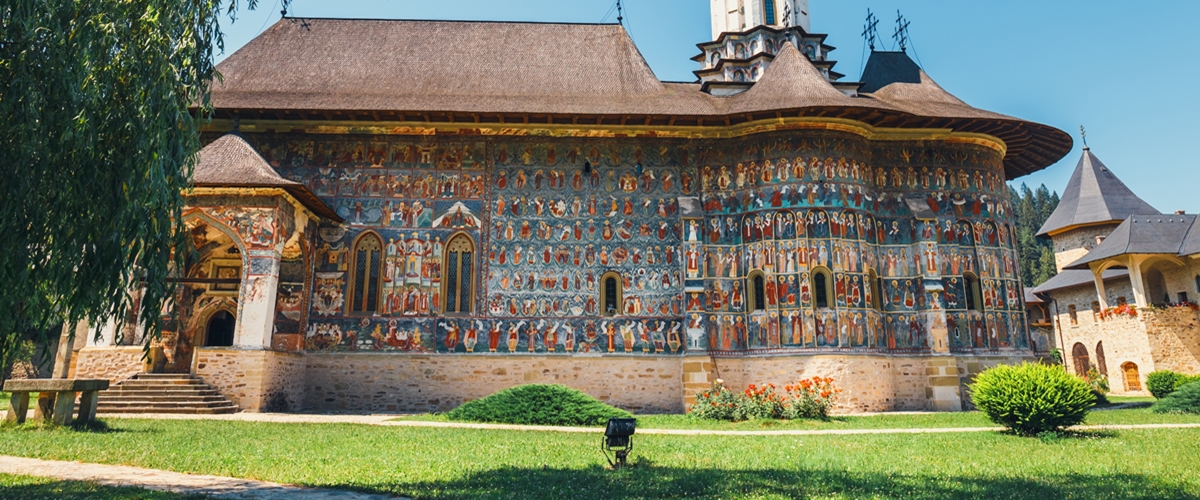Sucevita Monastery
Sucevita Monastery is situated in the same-named village and is surrounded by beautiful mountain scenery. It features high walls, ramparts, and watchtowers that give it the appearance of a mediaeval fortress.
The church, which is devoted to the "Resurrection of Lord Jesus," was constructed in the Moldavian architectural style which was popularised under the authority of Stephen the Great. Byzantine and Gothic components are harmoniously combined, and it is decorated with features noticed in the ancient wooden churches of Moldavia.
The Moldavians found their escape by fortifying the monastery precincts, which served in times of foreign invasion as places for safety and security. The Ottoman Empire had forced them to demolish the defences of the principal cities. This explains why so many monasteries resemble miniature mediaeval strongholds.
The cathedral is surrounded by a sizable rectangular curtain wall that has spectacular gate towers and pointed towers at each corner. This prevents the mural paintings from suffering major damage, which has occurred to frescoes in other painted monasteries. The only notable distinction between this church and other Moldavian churches is the fact that the two doors at the west end were designed after a Wallachian design. The church features a tall tower on a triple star base and separate conical roofs aver the east end. The paintings at Sucevita had the best exterior and interior preservation. On an emerald green background, purple, red, and blue frescoes are painted. There is also a tonne of gold. They are a part of the Moldavian masters of Romania.
According to the legend, a woman who had sinned in order to gain forgiveness from God spent 40 years carrying the stone needed to build the current structure on her buffalo-powered cart. She wanted to be buried inside the church as a reward for finishing this difficult effort, but sadly, she was not given this privilege. This is the reason a black stone female head was carved into one of the corners of the belfry.
The museum of the monastery holds one of Moldavia's most extensive and priceless collections of mediaeval art.
The monastery, which was converted into a convent in 1936 and now shelters more than 50 nuns, continues to focus primarily on prayer.
In addition to this regular schedule, the convent also provides specialised workshops. For instance, there are workshops where eggs are decorated, another where nuns embroider, and a third where Byzantine-style icons are painted.
The monastery has been included on the UNESCO World Heritage Sites list since 2010.




.png)



